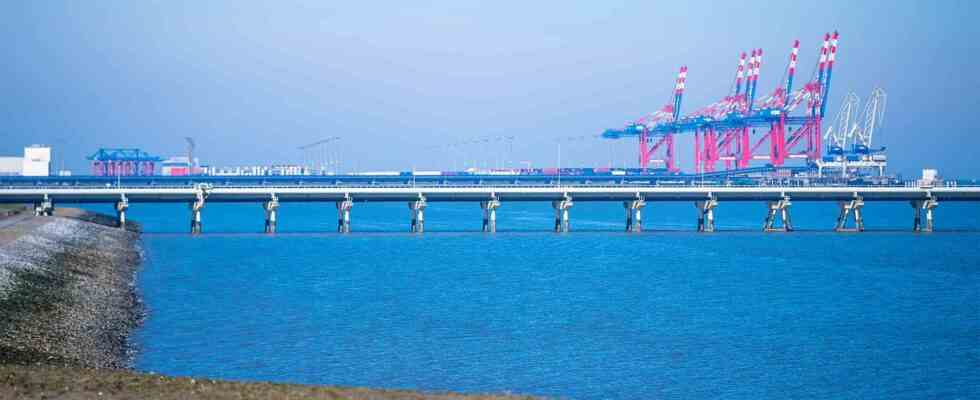Status: 04/11/2022 4:22 p.m
With liquid gas plants, Germany wants to make itself less dependent on Russian natural gas. The first floating LNG terminal could go online in Wilhelmshaven – possibly by the end of the year.
The city of Wilhelmshaven on the North Sea coast has a good chance of becoming the first hub for the liquid gas deliveries to the planned new LNG terminals, which the federal government is aiming for. The first floating LNG terminal in Wilhelmshaven could be completed and connected to the grid by the end of the year or by early 2023 at the latest. So far there are no liquid gas terminals in Germany. But that should change in order to reduce dependence on gas imports from Russia as quickly as possible.
A fifth of Russian gas imports could be replaced
As early as the turn of the year, around nine billion cubic meters of gas could be obtained via the planned terminal in Wilhelmshaven. That would be almost 20 percent of annual Russian gas imports, Lower Saxony’s Environment Minister Olaf Lies said recently.
The energy group Uniper wants to operate the first floating LNG terminal in Germany. The Düsseldorf-based company had been planning the project for some time. Last year, however, it was initially buried.
Pipeline planned to Etzel
Natural gas transmission lines and the natural gas storage facility in Etzel, which is also operated by Uniper, are only 28 kilometers from the planned LNG terminal. In order to bring the liquid gas from Wilhelmshaven to there, Open Grid Europe is to build a pipeline. Normally, a pipeline of this length would take five to seven years to build. “Now we need ten times the speed,” said Thomas Hüwener, Managing Director of Open Grid Europe, the “Bild” newspaper. But it is doable.
Three floating LNG terminals under discussion
A total of three floating LNG plants are currently planned across Germany. The Federal Ministry of Economics has commissioned Uniper and RWE to organize the rental of three terminals of this type. According to the Lower Saxony Environment Minister Lies, each of these platforms should handle eight to nine billion cubic meters of gas. Together, the plants would produce up to 27 billion cubic meters of gas, which would be enough to replace around half of Russia’s natural gas supplies.
In addition to Wilhelmshaven, Stade and Brunsbüttel are possible locations for the mobile LNG terminals. Hamburg is also examining the short-term use of a floating system in the port of the Hanseatic city. The connection to the long-distance gas network is decisive for the choice of location.
At least two fixed LNG terminals by 2025
The provisional floating LNG terminals are to be replaced by fixed facilities on land from 2025. As a reaction to the Ukraine war, the federal government announced the rapid construction of two stationary LNG terminals in Wilhelmshaven and Brunsbüttel. The Belgian investor group TES plans to set up a landing site for LNG as part of a “Green Energy Hub” by 2024. In Brunsbüttel, German LNG Terminal GmbH wants to promote the construction of an LNG plant. The Dutch gas network operator Gasunie, the RWE Group and the state development bank KfW have indicated their interest in participating in the project.
In Stade, Lower Saxony, plans are also underway for an LNG terminal operated by Hanseatic Energy Hub GmbH. The port and shipping logistics company Buss Group, the Belgian pipeline operator Fluxys and the Swiss private equity company Partners Group want to participate in the consortium that submitted the application for approval of an LNG terminal at the Stade location to the Lüneburg State Trade Inspectorate on Monday. The US chemical company Dow, which operates a large plant in Stade, is also involved in the plans and claims to be taking over a minority stake. At the end of March, the utility EnBW signed a declaration of intent to import three billion cubic meters of LNG annually via the Stade plant.
protests by environmentalists
Resistance to the planned stationary LNG terminals comes from environmentalists. “Because of the long construction times and the sharp drop in demand for natural gas in the medium term,” these plants do not make sense, says the controversial German Environmental Aid. She justifies her rejection with an assessment by the German Institute for Economic Research (DIW). Several environmental groups recently demonstrated against the German LNG plans in Hamburg.

